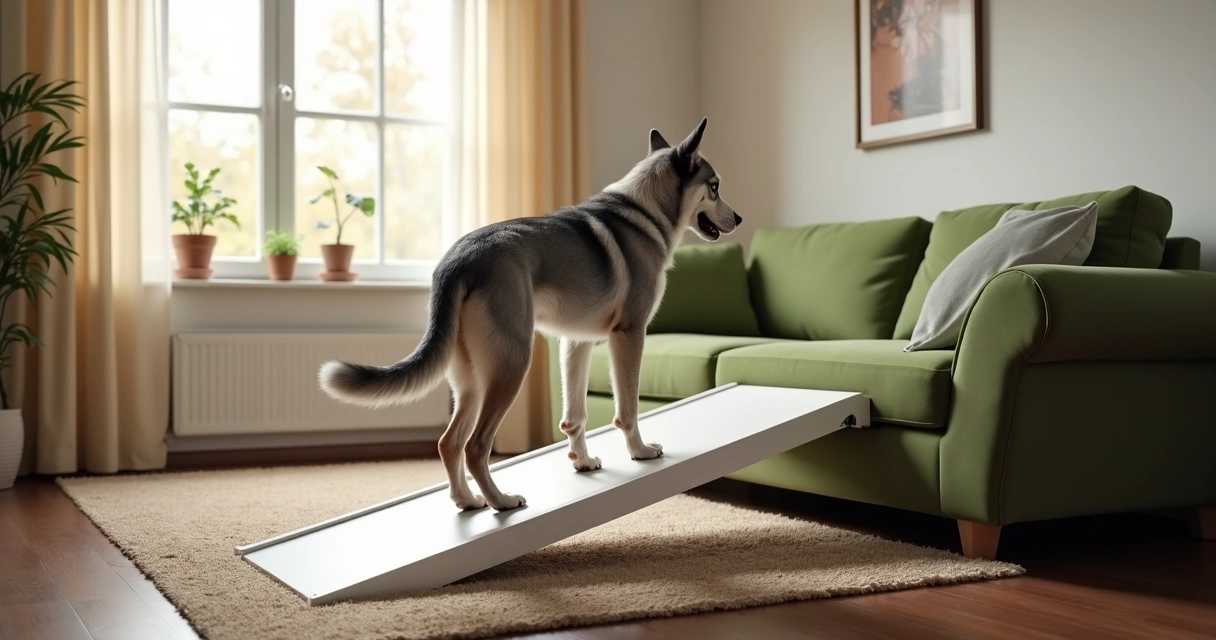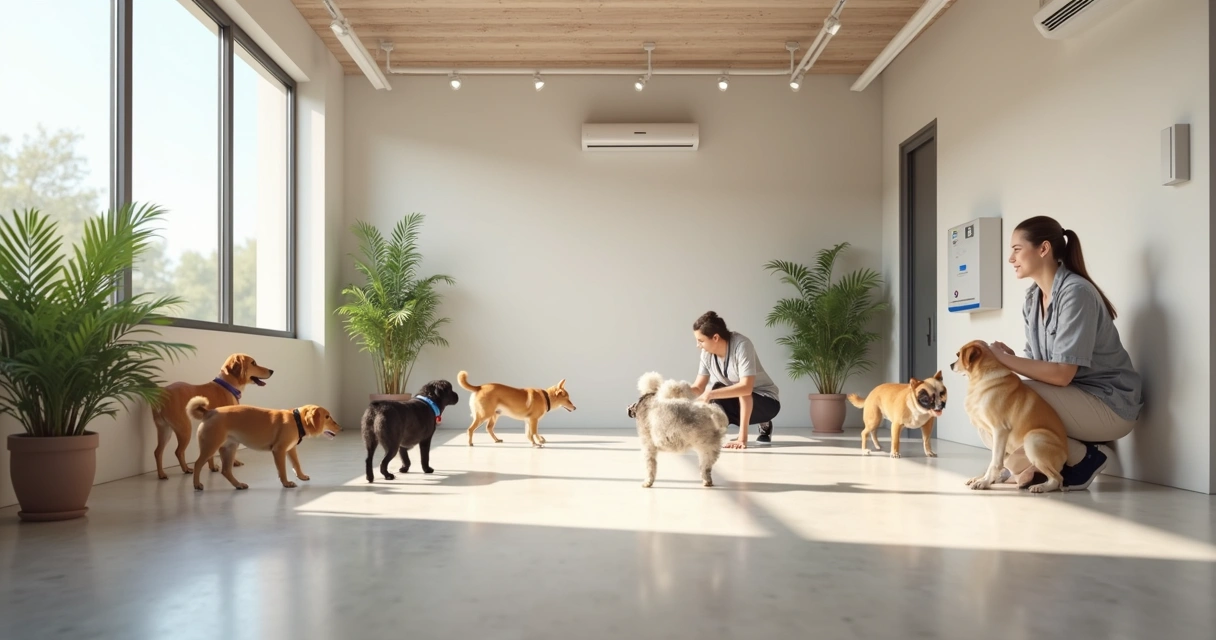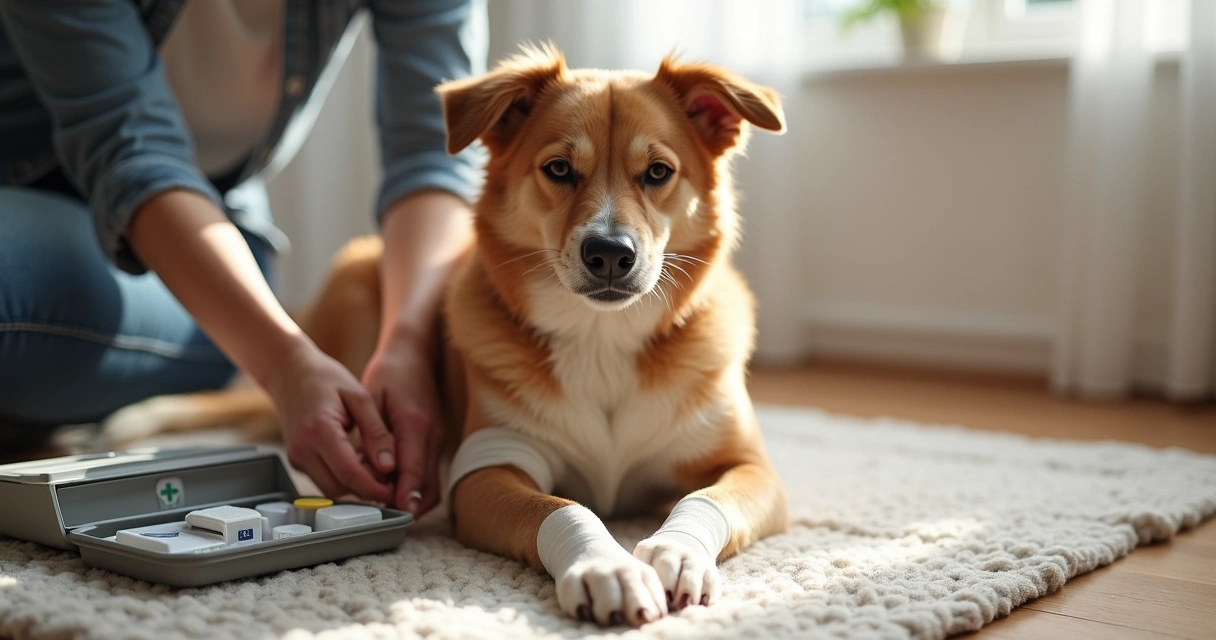A creaky morning, a little hesitation before a jump, a slow rise from a nap. For many of us, these small changes signal our beloved pets are getting older. It sneaks up on you. Suddenly, routines that once came easy look a little harder for your cat or dog. Arthritis and other joint issues become common. Maybe you notice your pet hesitating at stairs, or not leaping to greet you like before. Living with a senior pet means making life gentler. It can also be incredibly rewarding. With the right help, mobility challenges don't have to mean giving up on joy or comfort.
Let’s explore what really works, according to both personal stories and scientific studies. Managing these changes means adapting together—sometimes in ways you might not expect.
Why mobility challenges are common in senior pets
The odds are higher than most people think. Take dogs: one study of 455,557 dogs in the UK found that 2.5% had osteoarthritis, and over 200,000 dogs each year are affected. Another large-scale survey reported that 2.23% had arthritis. For cats, the numbers are even more striking: 61% over the age of six and up to 90% of cats over age twelve show signs of osteoarthritis. According to recent analysis, osteoarthritis cases continue to climb—up 66% in dogs and 150% in cats in just ten years.
Old age isn’t a disease, but it sure comes with its own baggage.
Mobility can change due to pain, muscle loss, or neurologic issues. You might see stiffness, difficulty standing, less eagerness to play, or unsteady walking. Here’s where a little help goes a very long way.
1. make their environment safe and easy
Small changes at home may matter most. Think like your senior pet: could you easily reach the sofa or food bowl if your hips ached? Here are a few ideas that make a big difference:
- Ramps and steps: For beds, cars, or sofas, sturdy ramps or stairs save joints (and your back). Textured surfaces are better than slick ones.
- Non-slip rugs: Hard floors are tough on wobbly legs. Place rugs, runners, or yoga mats where your pet walks most.
- Accessible litter boxes and beds: Lower sides for litter pans, orthopedic bedding, or heated mats help cats and dogs feel more comfortable. Cats especially, with such high rates of arthritis.
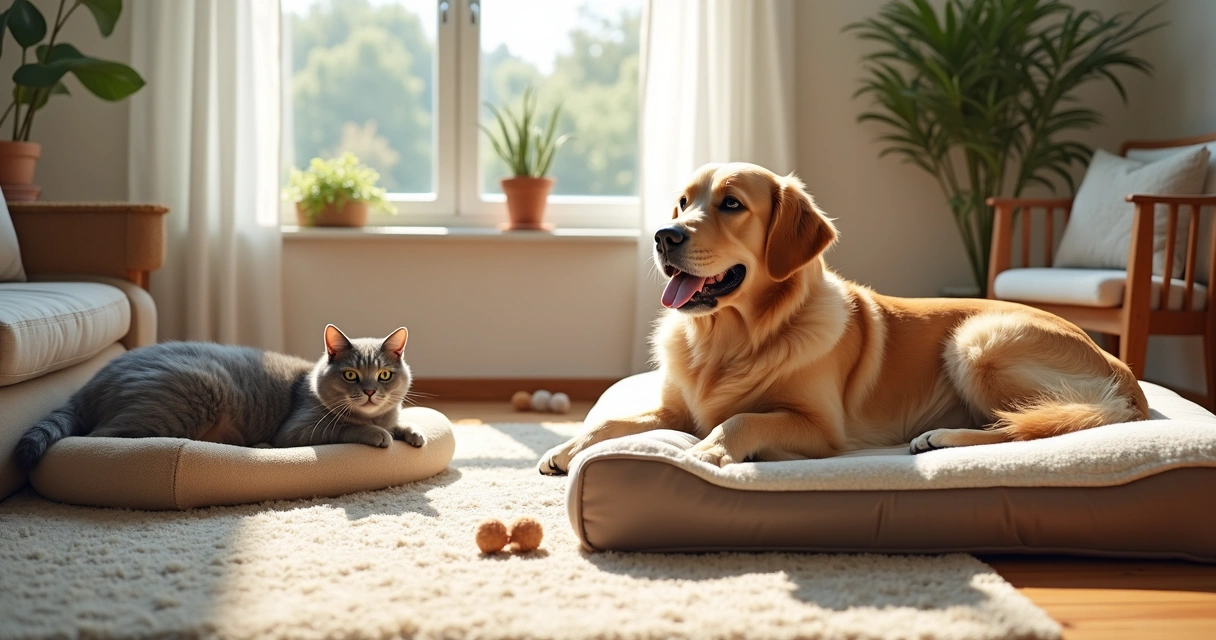
Sometimes, friends visiting Dogtown are amazed at how quickly a dog perks up with just a softer resting spot and a clear, slip-free path from their nap to the water bowl.
2. keep them active, but not too much
It feels a little counterintuitive: shouldn’t a pet with arthritis rest? The trick is moderation. Gentle movement keeps muscles strong and joints loose. Try these approaches:
- Shorter, more frequent walks instead of long treks.
- Swimming, when possible, offers exercise without joint strain.
- Simple games with soft toys encourage movement for cats—wands, balls, or boxes do the trick.
- Always monitor for signs of pain, and let your pet set the pace.
It’s okay if some days are slower and others show a little pep. As we say at Dogtown, “A happy tail at a slow pace beats a fast one in pain.” Our daycare programs allow for flexible, tailored activity for each pet’s ability—stimulating but gentle. At home, just seeing your pet enjoy a short walk can be reward enough for both of you.
3. try low-stress grooming
Senior pets often neglect self-grooming. Matted fur hurts. Overgrown nails worsen walking problems. Soft brushing a few times a week prevents mats, and regular nail trims help with stability.
Some cats and dogs enjoy gentle bathing, but look for signs of stress. Choose places that cater to older animals’ needs. At Dogtown’s grooming services and cat grooming, staff is trained to go slow, use non-slip mats, and offer handling breaks.
Comfort is care. A clean coat is a little win.
4. explore physical therapy and gentle massage
More owners are turning to hands-on therapies for older pets. Massage and gentle stretching can really ease stiffness. Some pets respond to heat pads or targeted exercise programs—done under vet or trainer advice.
- Just simple circular rubbing, or very gentle flexion/extension, can make a visible difference over time.
- For dogs or cats showing marked difficulty, physical therapy (with a professional or at home) can help maintain mobility.
The team at Dogtown’s personalized training can advise on easy home routines. If you’re unsure, ask your vet for basic moves suited to your pet’s diagnosis.
5. consider mobility aids and harnesses
There is a growing set of tools to assist aging pets:
- Harnesses: Support harnesses make stairs and walks safer, especially for bigger dogs or those recovering after a fall.
- Wheelchairs: For pets with advanced weakness, these offer continued movement and freedom.
- Carts, booties, and slings: Little things count—grippy socks, lifting slings for bathroom breaks, even orthopedic shoes.
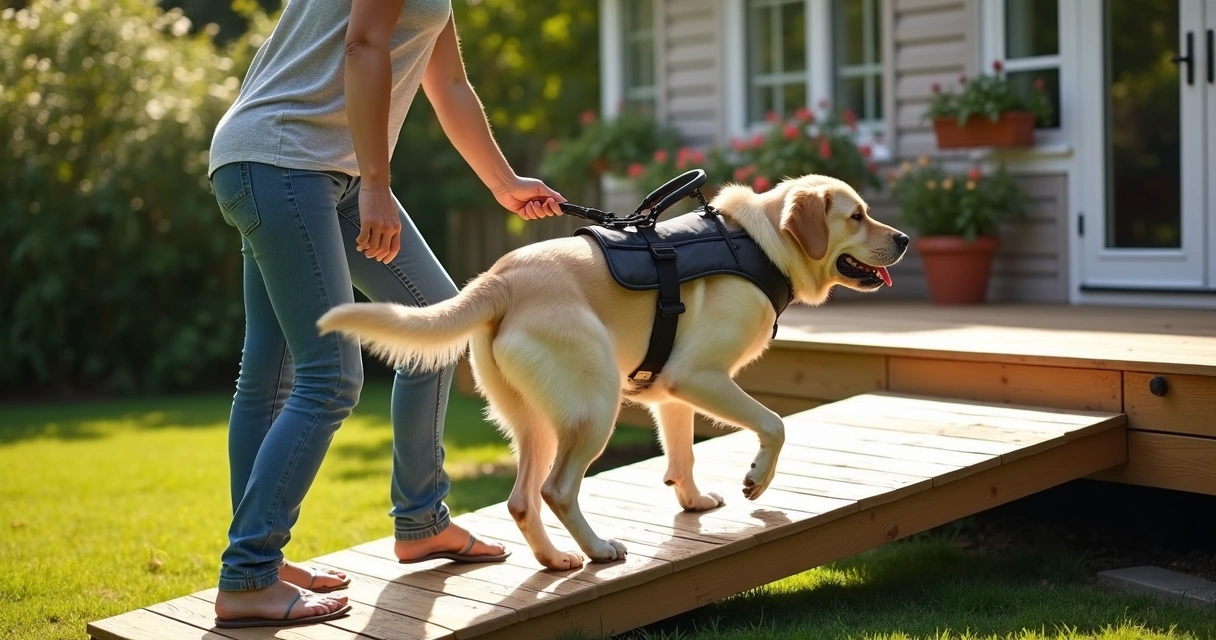
You do not need a fancy setup to make a huge difference. Often just a harness or cart helps your dog enjoy parts of their old routine again.
6. manage their weight and diet
This is touchy—food is love, but extra weight is heavy on sore joints. Ask your vet (or Dogtown’s staff) about the best meal plans for mobility-challenged seniors. Sometimes, moving to a senior formula food, or adding omega-3 fatty acids for joint support, is recommended.
- Keep treats small and nutritious.
- Feed in raised bowls if bending hurts.
- Frequent, consistent feeding routines help, even if the appetite slows.
The right diet is not a miracle cure, but when combined with other changes, it helps pets maintain strength—and energy for their favorite activities, even if it’s just a game of hide-and-seek with you.
7. stay in touch with your veterinary team
Frequent, brief check-ins work well, especially as pets age. Sometimes, what looks like simple “slowing down” is actually pain or a treatable issue. Your vet may suggest:
- Pain relief plans: medication, supplements, laser therapy, or acupuncture.
- Blood work updates: to rule out thyroid, kidney, or other age-related issues.
- Regular weight checks for early intervention.
Dogtown offers free pre-enrollment assessments to guide personalized care, so no concern goes unnoticed. Whether it’s subtle stiffness or a sudden limp, regular feedback and observations can improve life for your best friend.
What a happier, mobile senior pet looks like
It might not always be that tail-chasing energy or lightning-fast sprints down the hallway. But there is a quiet comfort in seeing your senior pet get up with less trouble, wag gently, or curl up on their favorite rug without a struggle. That’s real success.
“Old age is a privilege. The tail still wags.”
Conclusion: every step counts
Senior pets can still have days full of sunshine, curiosity, and connection. Managing mobility issues takes teamwork—between you, your veterinarian, and caring animal facilities like Dogtown. The right advice makes the years golden, not gray.
If your old friend seems stiff or sad, know you aren’t alone. With simple tweaks and a little patience, happiness and gentle motion are possible at any age. Ready for a new approach? Discover our boarding option (with extra help for seniors), set up an assessment, or chat with our team about your companion’s needs. At Dogtown, every pet’s comfort and joy comes first—because their best days aren’t behind them, they’re now.
Frequently asked questions
What is a senior pet mobility challenge?
A mobility challenge in senior pets refers to problems with moving around due to aging changes like arthritis, muscle weakness, or neurologic issues. This includes trouble standing, walking, climbing stairs, jumping, or grooming. Studies show conditions like arthritis become much more common with age, leading to pain or stiffness that makes regular activities harder. Simple things—like getting up or accessing the litter box—often take more effort for older pets.
How can I help my pet move easier?
You can help by making small changes in their environment: use nonslip rugs, add ramps or pet stairs, and provide padded bedding. Gentle exercise helps keep muscles strong, while supportive harnesses can assist with stairs or walks. Keep nails trimmed and fur untangled to make getting up and down easier. Talk to your vet or facilities like Dogtown to set up routines and assessments specific to your pet’s condition.
What are the best ramps for senior pets?
The best ramps are sturdy, low-angle, and have non-slip surfaces. Wooden or high-quality plastic ramps work well for both cats and dogs. They should have raised sides for safety and gentle inclines for easy use. Measure the height of the bed, car, or sofa you’re targeting, and always introduce your pet to the ramp slowly with rewards. Ensure the width and surface texture feel safe for paws.
Is physical therapy good for older pets?
Yes, physical therapy can help maintain strength, improve mobility, and ease pain in older pets. Gentle massages, stretching, aquatic therapy, or specific exercises recommended by your vet or a certified trainer support joint health and well-being. Improvements might be subtle—less stiffness or more willingness to play—but these changes add up to a higher quality of life for senior cats and dogs.
How much do mobility aids cost?
Mobility aid costs range from under $20 for grippy booties or basic supports, to several hundred dollars for custom ramps or wheelchairs. Harnesses are usually affordable; custom-fitted carts or specialized equipment cost more. Many owners find that a few budget-friendly aids (like ramps or slings) make a meaningful difference without breaking the bank. Your veterinarian or the Dogtown team can help guide purchases based on individual needs and budget.


